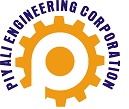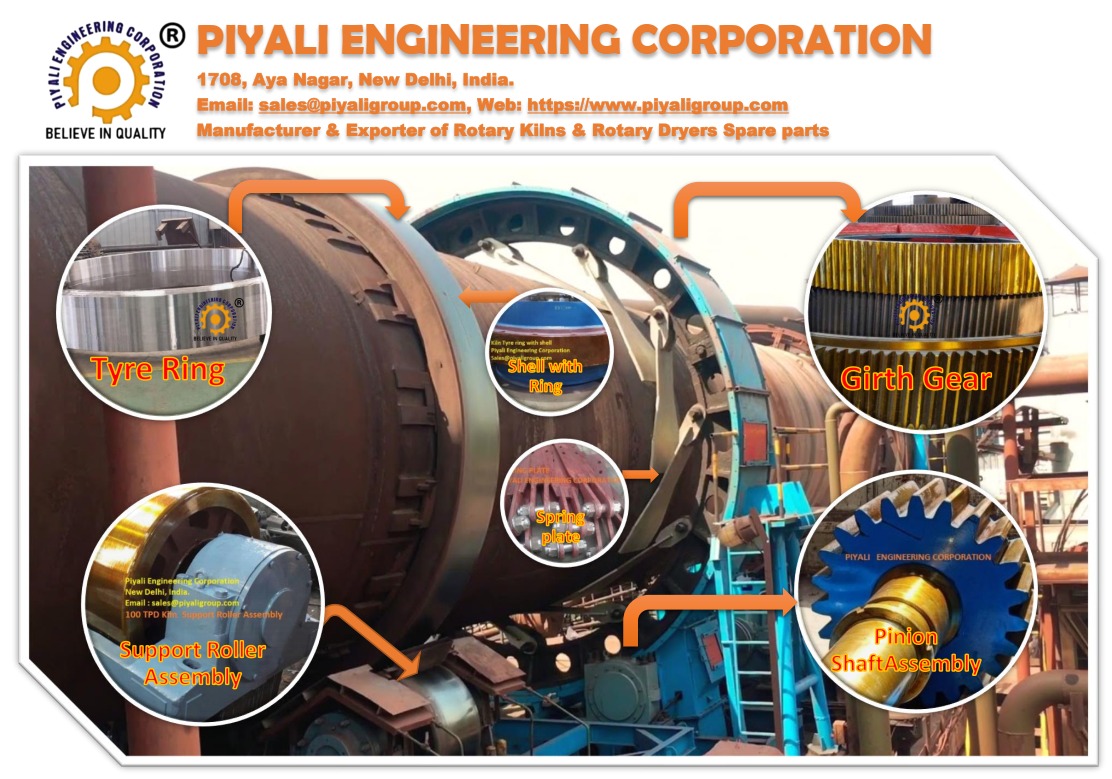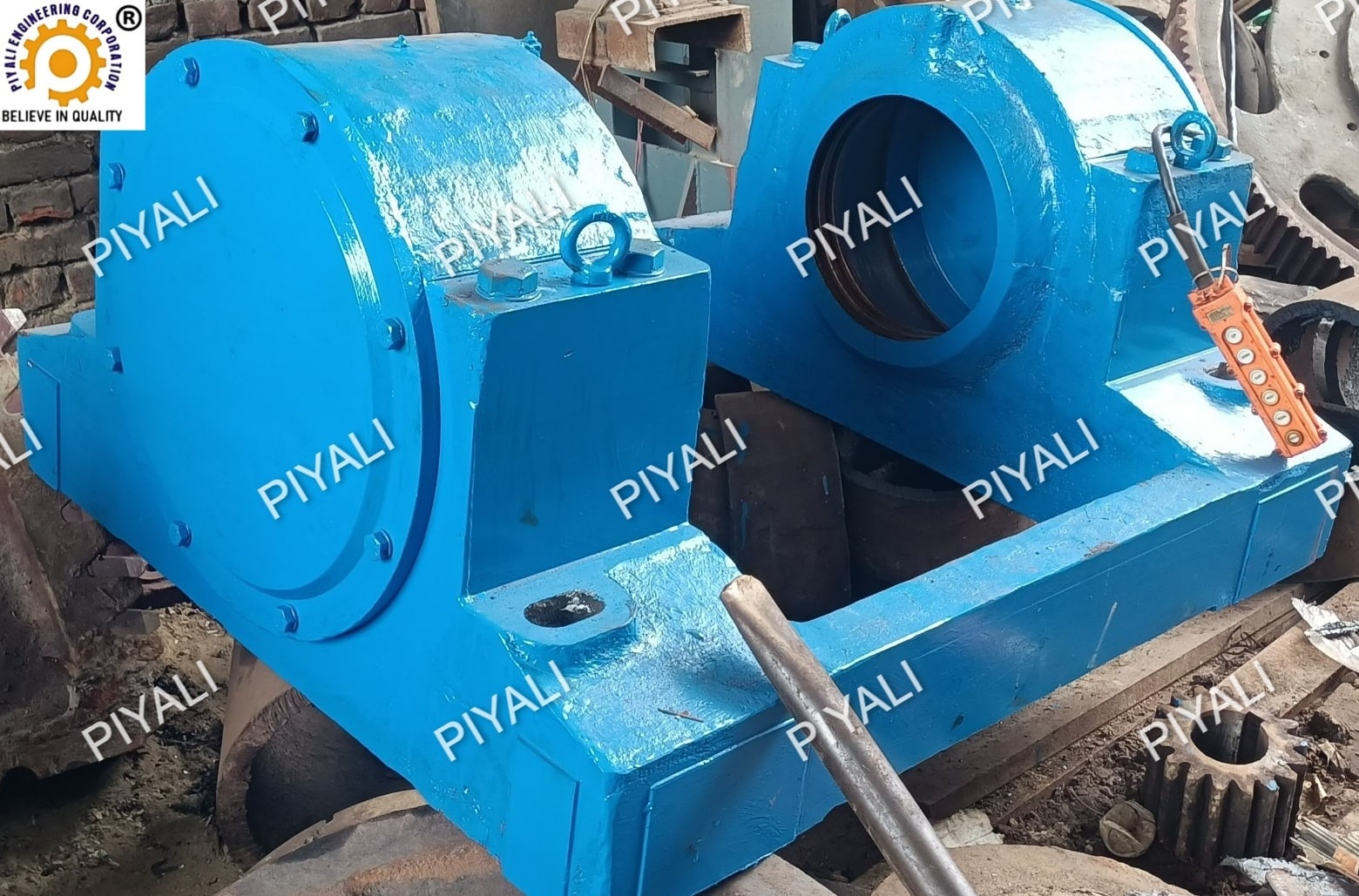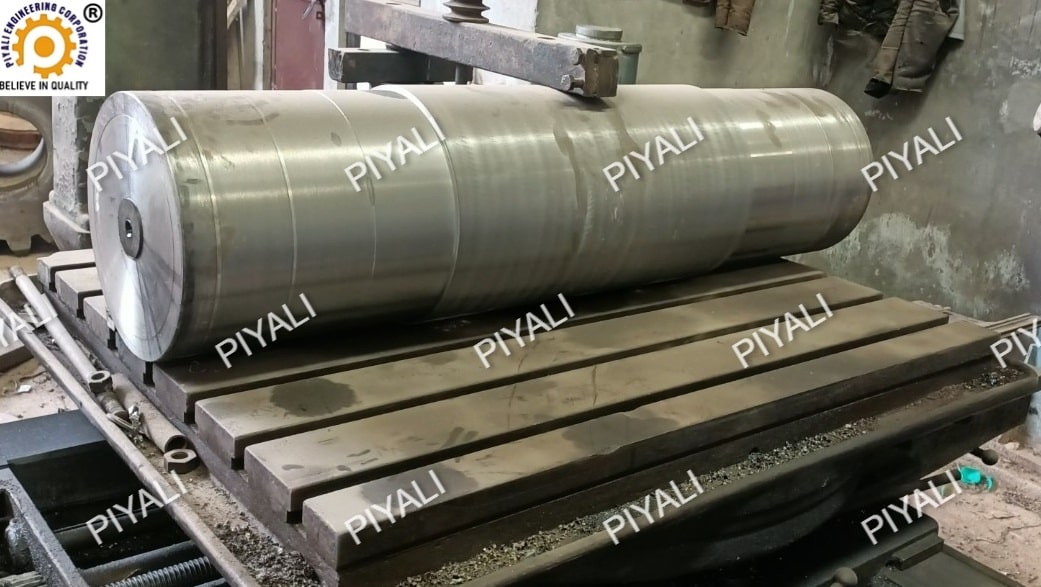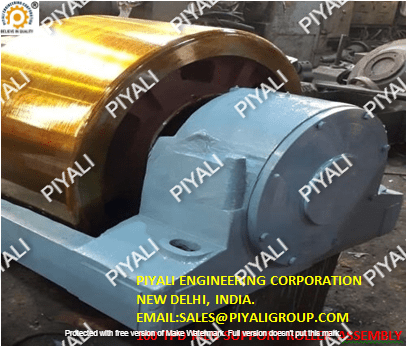Piyali Group Corporation is the proud designer and manufacturer of high-quality kiln support roller assembly goods that are acknowledged as some of the best in the sector. Our products perform a variety of functions in many factories and industries. A mechanical tool used in a variety of industrial applications to support and guide a moving object is a 100 TPD kiln support roller assembly. A cylindrical roller, shaft, bearings, and a housing or frame to hold the roller are its standard components. The 100 TPD kiln support roller assembly usually consists of two or more support rollers mounted on a shaft that runs parallel to the kiln axis and serve to support the weight of the kiln as it turns.
To ensure the smooth operation of the kiln, proper maintenance and inspection is necessary to keep the kiln support roller operating safely and effectively. The 100 TPD kiln support roller assembly consists of various parts such as bearing housings, seals, and lubrication systems.
KILN SUPPORT ROLLER ASSEMBLY PARTS:
- The support roller is an essential component of a rotary kiln. It bears or supports the weight of the rotary kiln, allowing the cylinder and rolling ring to rotate smoothly on the kiln support roller. As a result, supporting rollers have become a crucial criterion for assessing the quality of rotary kilns. As per the designs of the customers, we can offer casting and processing services for a variety of rotary kiln parts.
- A shaft is a common and essential machine component. The roller shaft is the primary drive element of a support roller assembly. In general, it is a revolving part with a circular cross-section that uses power transmission.The shaft might be solid or hollow.
- Combined Bearing Housing: A combined bearing housing supports a rotating shaft or bearing in commercial applications. They support the rotating shaft that moves the machinery. Roller bearing is a type of combined bearing housing that supports both radial and axial loads. The radial bearing supports the primary load, while the axial bearing supports the side thrust.
- Sleeve bearings allow two components to move more easily, minimize friction, and absorb vibration. They can support a large amount of weight, which makes them appropriate for many heavy-duty applications.
- Bearing end cover is a detachable disc that keeps unwanted particles away from the port location. Remove the bearing cap and the worn lower shell to replace the main bearings. End caps are safety end caps that fit over rotating shafts to protect moving parts and protect against hazards.
- By following the complete procedure, 100 TPD kiln support roller assembly can properly assembled.

1. SUPPORT ROLLER:
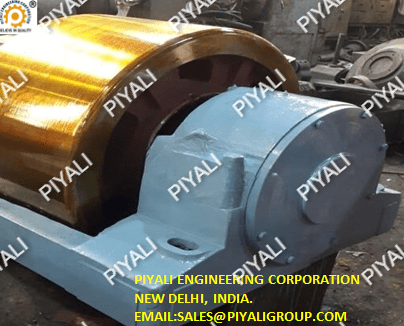
DRI SPONGE IRON STEEL PLANT – PIYALI GROUP
The support roller is an essential component of a rotary kiln, which helps to support the weight of the rotary kiln and transfer it to the bearings so that the cylinder and the roller ring can rotate smoothly on the kiln support roller. Therefore, support rollers have become a crucial criterion for assessing the quality of rotary kilns. They use high quality steel and can withstand extreme heat, heavy weights and abrasive materials. We can provide casting and machining services for a variety of rotary kiln parts based on customers’ designs.
100 TPD Kiln Support Roller Technical Specifications
- DIAMETER – 1000mmm Face width 560mm
- CERTIFICATION – ISO9001
- APPLICATIONS – 100 TPD Kiln Accessories for DRI Sponge Iron Plant
- MATERIAL GRADE – Casting IS 2708 Grade 2/3, IS 2644 CS 700, GS 30Mn5
- DESIGN – As per the customer requirements (POPURI / IPS / ITC / MEC / LURGI etc.)
FEATURES OF KILN SUPPORT ROLLER:
- The supporting roller carries a heavy load and runs continuously.
- Simple design and easy maintenance.
- Adaptability to a variety of harsh working environments.
- Powerful Machining and Heat Treatment Skills.
- Strict Quality Control and Prompt Delivery.
2. KILN SUPPORT ROLLER SHAFT
A shaft is a common and essential machine component in 100 TPD support roller assembly. The roller shaft is the primary drive component of a support roller assembly. The rotary kiln support roller and shaft are placed under the kiln and in contact with the kiln ring. In general, it is a revolving part with a circular cross-section that uses power transmission.The shaft might be solid or hollow.
The support roller shaft usually has bearings on both ends to ensure smooth rotation. The bearing withstand various loads, such as axial and radial loads. The shaft may also have additional features such as keyways, grooves, or threads that allow for easy installation and alignment with other components.
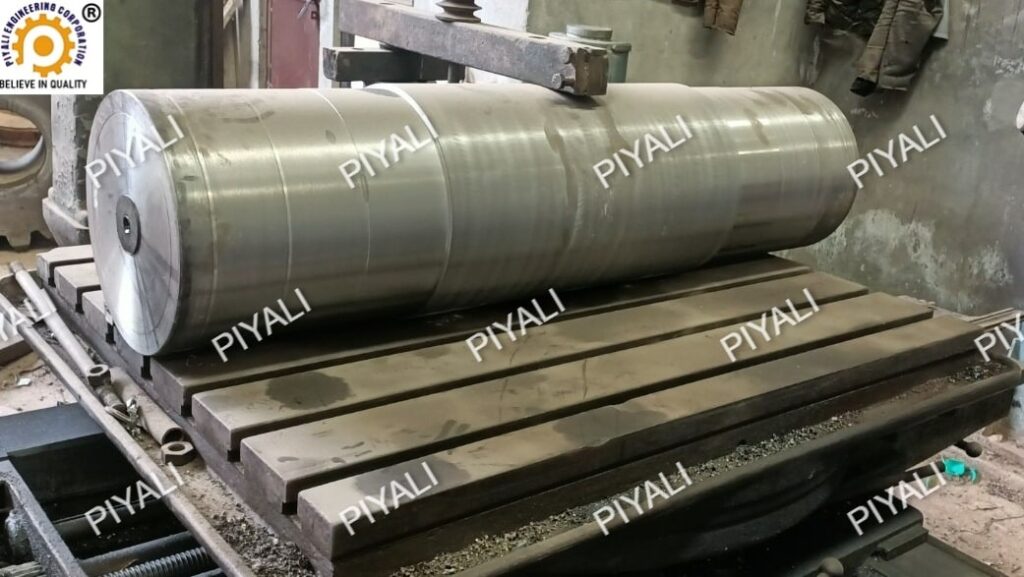
DRI SPONGE IRON STEEL PLANT – PIYALI GROUP
100 TPD Kiln SUPPORT ROLLER SHAFT Technical Specifications
- DIAMETER – 300mmm
- CERTIFICATION – ISO9001
- APPLICATIONS – 100 TPD Kiln Accessories for DRI Sponge Iron Plant
- MATERIAL GRADE – Forged Steel EN-9, EN-19, EN-24, 42CrMo4
- DESIGN – As per the customer requirements (POPURI / IPS / ITC / MEC / LURGI etc.)
SHAFT MANUFACTURING PROCESS:
The main steps involved in manufacturing a shaft are machining, turning, finishing and packing.The manufacturing process begins with roughing, which essentially cuts the shaft into accurate small pieces. During the turning process, the shaft pieces forms the final shape. A milling machine then transforms the pieces into the desired shape. Finally, the package is delivered to the customer.
SHAFT MACHINING PROCESS:
The shaft machining process produces precise and accurate shapes on a metal shaft. Shaft machining is necessary for a support roller to function correctly and efficiently.
Shaft machining process are as follows:
Design: The first step is to create a design for the shaft in the CAD/CAM software. Use this design to create the paths for the tools and cutting areas for the CNC machine. Also set the specifications of the shaft, including length, diameter, and other necessary specifications.
Set up the machine: set up the machine (CNC VTL) with the correct fittings and tools for the shaft. This includes a tool chuck or joint to hold the workpiece, cutting tools for roughing and finishing, and coolant to wet and cool the cutting process.
Grooving process: Horizontal boring machines are used to drill end faces, center holes, and tapped holes. A cutting tool is used to enlarge an existing hole or bore in the shaft
Drilling process: Drilling is a common process in CNC VTL (vertical turning lathe) machining to drill or make holes in a workpiece. Usually, a drill, a cutting instrument with a pointed tip, is placed on the workpiece, which rotates rapidly.
Mounting: Once the machine is set up, mount the support roller on a lathe or other machining tool to form the shaft. The shaft is securely fastened to the tool, making sure that it is properly aligned and positioned.
Turning process: Turning uses a cutting tool to remove material from the shaft.
Shaft Machining and Inspection Process
Roughing process: Roughing is the process of using a roughing tool to remove the bulk of the material from the workpiece. A roughing tool removes excess material from the workpiece while avoiding collisions.
Chamfering process: In the chamfering process, the edge of a workpiece, such as a shaft, is cut or turned to form a specific angle or shape. Chamfering is usually done on a CNC VTL (vertical lathe) with special cutters to make a precise cut on certain edges.
Finishing: After roughing, finishing tools produce a smooth surface on the workpiece. Grinding, polishing, and buffing are various methods to finish the shaft. This ensures that the surface of the shaft is clean and free of defects.
Inspection and Quality Control: The last or final step is to test the shaft to ensure that it meets the standards set by the manufacturer. This involves checking the diameter, length, and any other specific requirements identified during the preliminary test. Quality control measures are necessary to ensure that the support roller operates efficiently.
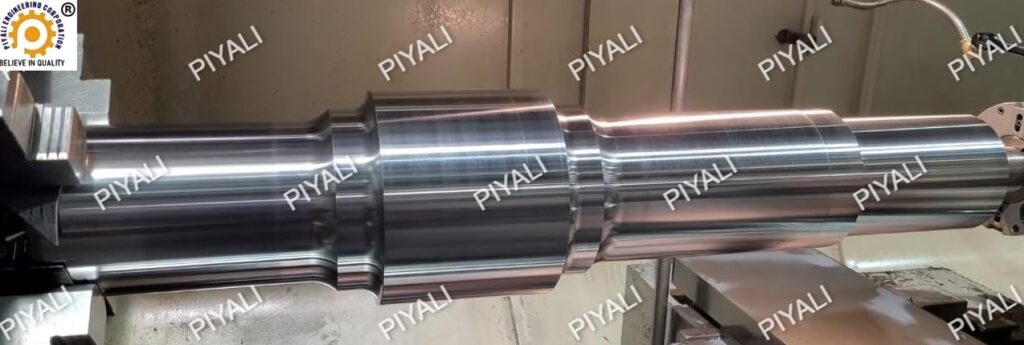
FEATURES OF SUPPORT ROLLER SHAFT:
- The support shaft holds the substantial weight of the rotary kiln.
- Robust and powerful tool.
- Proper alignment and machining is necessary to ensure the smooth rotation of the kiln.
- Ensures effective and secure functioning.
- To prevent possible safety risks and guarantee the long-term dependability and performance of the kiln, proper maintenance and routine inspection of the support shaft is crucial.
3. COMBINED BEARING HOUSING
In 100 TPD kiln support roller assembly, A combined bearing housing supports a rotating shaft or bearing in commercial applications. It integrates two or more types of bearings into a single housing unit to facilitate maintenance and installation of the bearing unit. They support the rotating shaft that moves the machinery. The radial bearing holds the primary load, while the axial bearing holds the side thrust.
The primary purpose of the combined bearing housing is to maintain stability and support to the roller assembly during its rotation. The bearing enables the roller assembly to rotate efficiently or smoothly and with less friction. The bearing enables the roller assembly to rotate efficiently, smoothly, and with less friction. The combined bearing housing provides a stable and safe mounting position for the roller assembly.
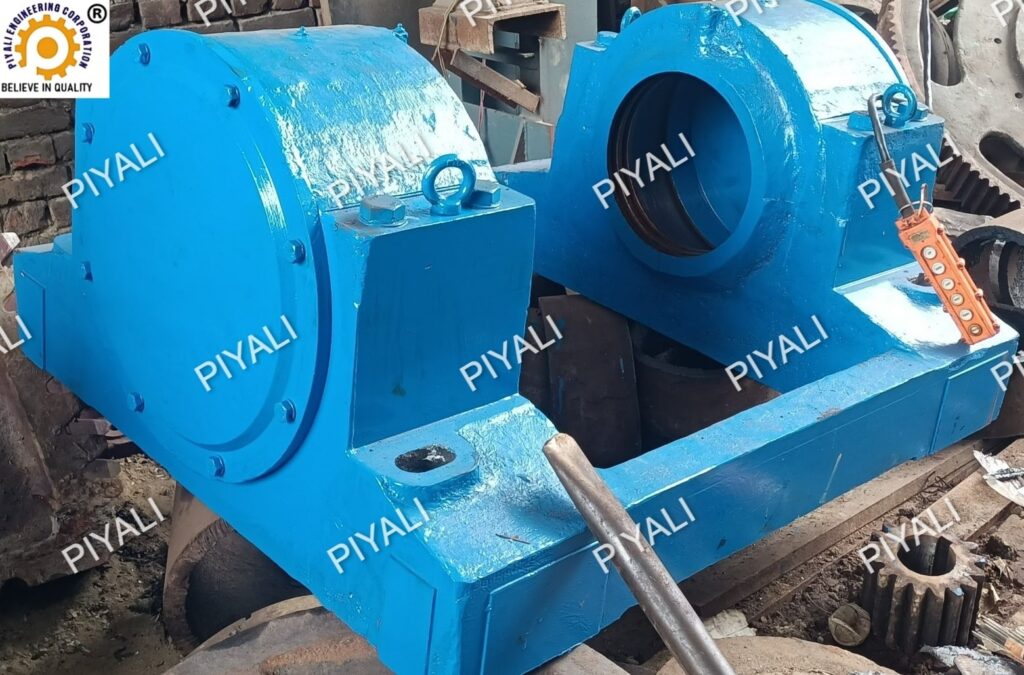
KILN SUPPORT ROLLER COMBINED BEARING HOUSING TECHNICAL SPECIFICATIONS:
- BEARINGS – 23160 / 24160
- CERTIFICATION – ISO9001
- APPLICATIONS – 100 TPD Kiln Accessories for DRI Sponge Iron Plant
- MATERIAL GRADE – Cast Iron / Cast steel IS 1030
- DESIGN – Standard or as per the customer requirements
FEATURES OF COMBINED BEARING HOUSING:
The following are some of the important aspects and purposes of rotating kiln bearing housings:
- Supports the bearings: The bearing housing accommodate and support the bearings that carry the weight of the kiln and the raw material.
- Protection: The bearing housing guards against contamination of the bearings by dust, grime, and other foreign objects. Additionally, it aids in cooling down the heat produced by the revolving kiln and its bearings.
- Maintenance: The bearing housing has access panels or removable covers that make it simple to examine and lubricate the bearings. For the kiln to operate safely and effectively, routine upkeep is necessary.
- Heat resistance: The bearing housing needs to be able to endure the kiln’s potentially 1000°C-plus temperatures. To prevent deformation or failure under these harsh circumstances, the materials used to construct the housing must have great heat resistance.
4. ROTARY KILN SUPPORT ROLLER LABYRINTH RINGS:
The mechanical part known as kiln support rollers assembly with bearings and labyrinth rings is used to support and move a kiln, which is used in many fields to heat and dry materials.The roller supports the kiln, while the bearings allow the kiln to rotate.The labyrinth rings are sealing mechanisms that prevent dirt, dust, and other contaminants from entering the bearing, thereby extending its life.
5. ROTARY KILN SUPPORT ROLLER END PLATES:
A component that is located at the end of the rotary kiln support roller shaft is the end plate.
6. ROTARY KILN SUPPORT ROLLER END COVERS:
A component that covers the end of the support roller and gives the rotary kiln extra support and protection. The end cover uses high-strength steel or other sturdy materials to support both the weight of the kiln and the substance to process. End covers protect the ends of the support rollers in a rotary kiln. The end covers assist to prevent dust and debris from entering the roller bearings which can harm the roller bearings and reduce the duration of the roller.
To prevent deformation or failure under these harsh conditions, the materials used to create the end cover must have high heat resistance. For the kiln to run smoothly and effectively and to prevent early wear or support roller failure, proper alignment is necessary. To ensure that support roller end covers are in excellent shape and provide adequate protection to rolling bearings, it is important to inspect and maintain them regularly.
